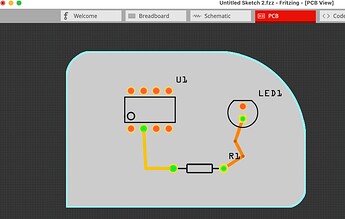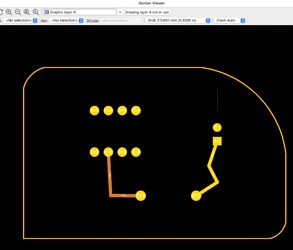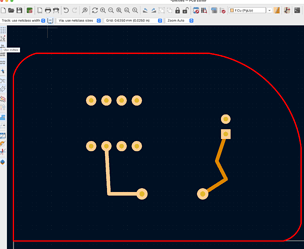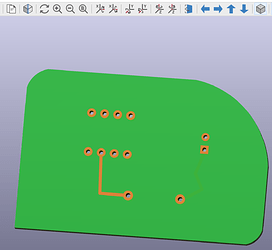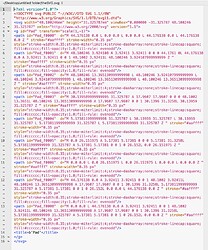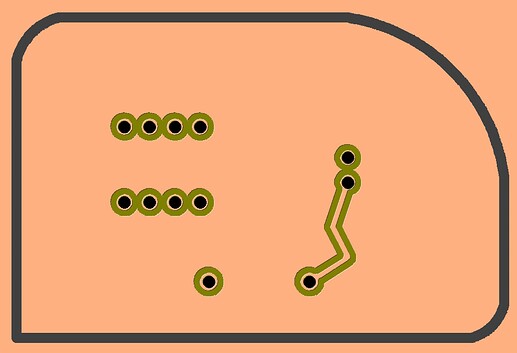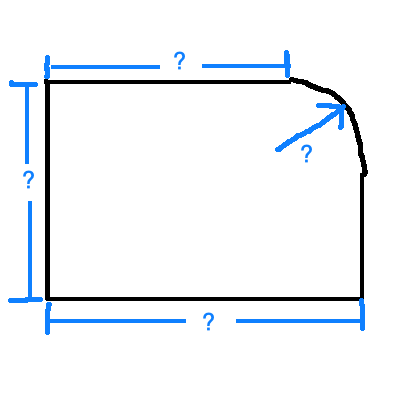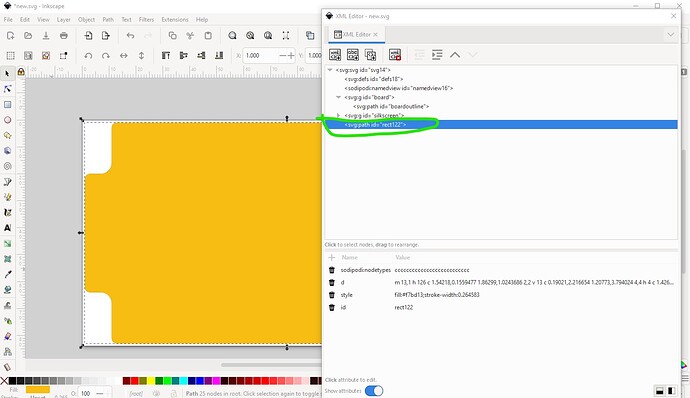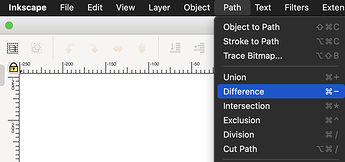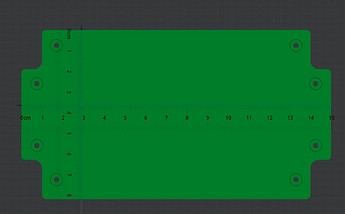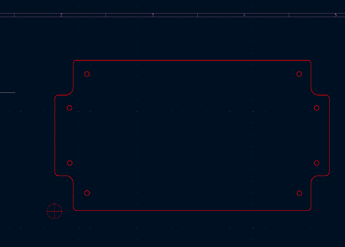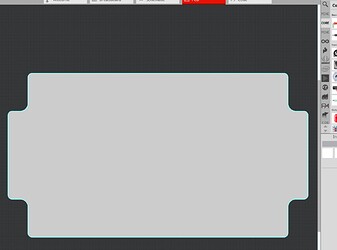FYI…
Though I no longer use Fritzing (preferring Kicad for past few years) this may help:
First - know that various programs that can create shape files for use in Fritzing, usually have Preference panels for setting Export type and things like limiting arc behavior and arc-to-line conversions… (example; FreeCad)
That said:
Regardless of posted info and documentation indicating Fritzing needs Layers defined in the file, they really don’t. You can create a PCB svg file by just drawing the shape and saving/exporting the SVG. I’ve done that with a handful of drawing programs.
I just now did this to confirm my poor Fritzing-user memory.
In fact, here’s what I just did to confirm Happiness!
Created a PCB Shape in FreeCad (no layers, did nothing beyond draw it) and Extruded it to fill-in the shape as a solid.
Exported it as Flattened SVG.
The SVG file size is 3kb (very small)
In Fritzing (my old version) I loaded the PCB shape and added a couple of Parts to it and added Tracks to Top & Btm
Then, Exported Gerber’s for Production.
Also, Exported to PDF
Then, with GerbView (Kicad’s Gerber viewer), I opened the Gerbers. No problem.
Then, I exported-to-PCB (a feature in GerbView)
Then, I opened the exported PCB and moved the PCB’s shape to the Edge-Cuts layer (that’s where Kicad wants the shape). No problem
Some screenshots… Mostly to show/confirmation…
PCB Loaded Into Fritzing
In GerbView
In Kicad, Moved Shape To Edge_Cut Layer
Kicad’s 3D-Viewer…
PDF of Copper_Btm (small 2kb)
The SVG

Screenshot of theSVG (to confirm Not creating Layers…)
For Fun, I loaded the Gerbers into CopperCAM (the program I use for CNC Milling PCB’s)
I did NOT setup any parameters (that would be needed for actual machining (tool bits, drill diameters…etc)). Just did it to do a Full Confirmation…
As you can see, All works Well! 
